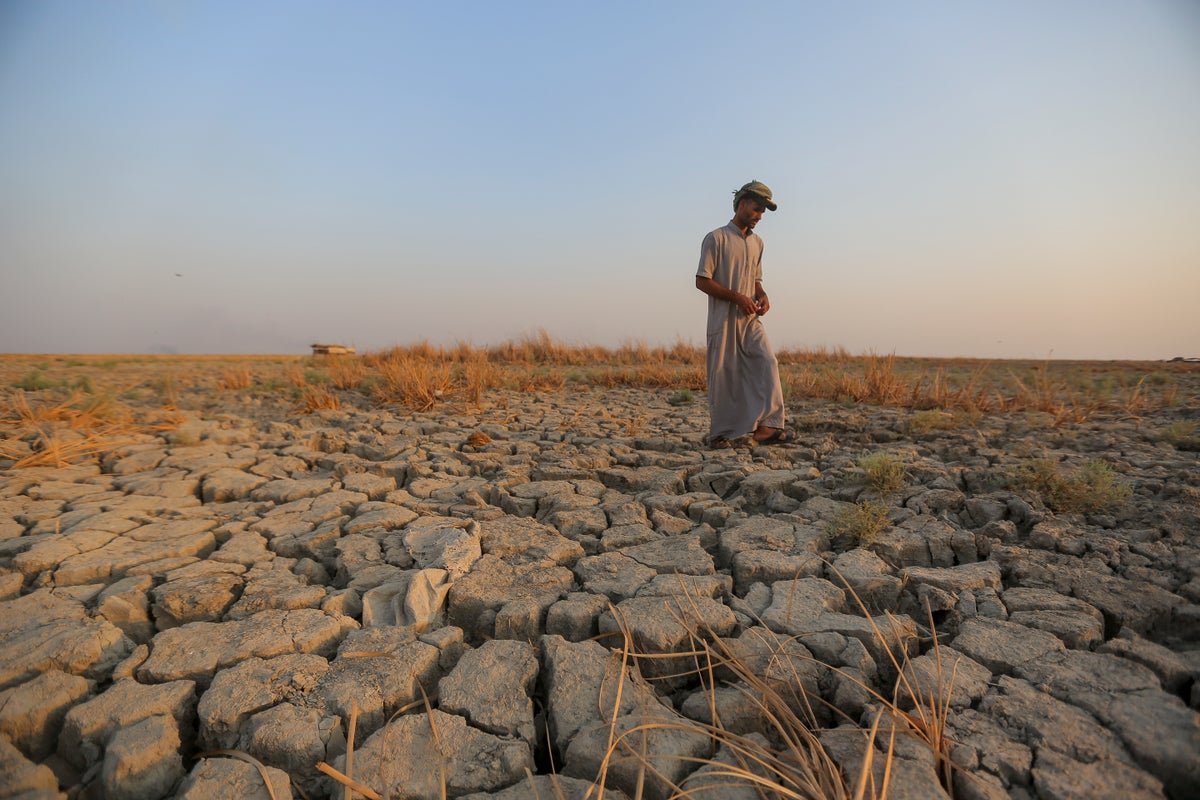
A three-year drought that has left millions of people in Syria, Iraq and Iran with little water wouldn’t have happened without human-caused climate change, a new study found.
The west Asian drought, which started in July 2020, is mostly because hotter-than-normal temperatures are evaporating the little rainfall that fell, according to a flash study Wednesday by a team of international climate scientists at World Weather Attribution.
Without the world warming 1.2 degrees Celsius (2.2 degrees Fahrenheit) since the mid-19th century, “it would not be a drought at all,” said lead author Friederike Otto, an Imperial College of London climate scientist.
It’s a case of climate change unnaturally intensifying naturally dry conditions into a humanitarian crisis that has left people thirsty, hungry and displaced, concluded the research, which has not yet undergone peer review but follows scientifically valid techniques to look for the fingerprints of global warming.
The team looked at temperatures, rainfall and moisture levels and compared what happened in the last three years to multiple computer simulations of the conditions in a world without human-caused climate change.
“Human-caused global climate change is already making life considerably harder for tens of millions of people in West Asia,” said study co-author Mohammed Rahimi, a professor of climatology at Semnan University in Iran. “With every degree of warming Syria, Iraq and Iran will become even harder places to live.”
Computer simulations didn’t find significant climate change fingerprints in the reduced rainfall, which was low but not too rare, Otto said. But evaporation of water in lakes, rivers, wetlands and soil “was much higher than it would have been’’ without climate change-spiked temperatures, she said.
In addition to making near-normal water conditions into an extreme drought, study authors calculated that the drought conditions in Syria and Iraq are 25 times more likely because of climate change, and in Iran, 16 times more likely.
Kelly Smith, assistant director of the U.S. National Drought Mitigation Center in Nebraska, who was not part of the study, said the research made sense.
Drought is not unusual to the Middle East region and conflict, including Syria’s civil war, makes the area even more vulnerable to drought because of degraded infrastructure and weakened water management, said study co-author Rana El Hajj of the Red Cross Red Crescent Climate Centre in Lebanon.
“This is already touching the limits of what some people are able to adapt to,” Otto said. “As long as we keep burning fossil fuels or even give out new licenses to explore new oil and gas fields these kinds of events will only get worse and keep on destroying livelihoods and keeping food prices high. And this is not just a problem for some parts of the world, but really a problem for everyone.”
___
Follow AP’s climate and environment coverage at https://apnews.com/hub/climate-and-environment
___
Follow Seth Borenstein on Twitter at @borenbears







